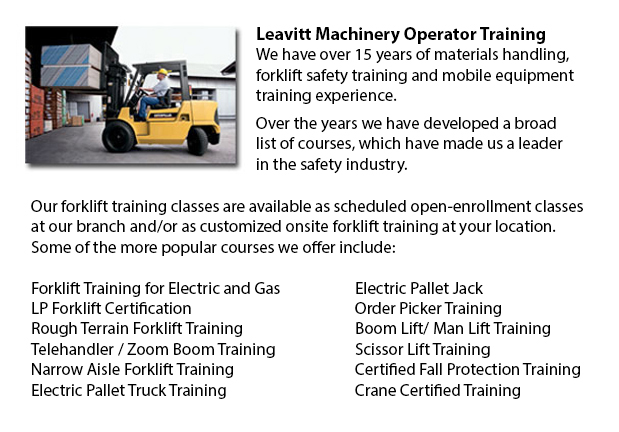
Pallet Stackers Training Vaughan - Pallet stackers are a kind of pallet jack that can be utilized to stack, transfer and lift goods placed on a pallet that are far too heavy for manual lifting. Generally these mechanisms are employed to load and unload cargo from trucks and to move pallets from one location to another within a stockroom of stockroom space. Most pallet stackers are made of heavy duty materials to withstand extreme weights. Pallet stackers are often identified as pallet jacks. They can be operated from a seated, upright or walk-behind position. Pallet jacks are separated into manual and powered types.
Certain fundamental components comprise the pallet stacker. There are forks that slide beneath a pallet, capable of moving and raising it to a desired height. The motor compartment or casing houses the gas-run, electronic or hydraulic gear that powers the machine.
Commonly, pallet jacks come in walk-behind versions that are hand-powered. This means that they are moved by pushing and pulling the jack into its preferred location, while lifting the heavy pallets will be operated hydraulically making this task much easier. Using a foot pedal or handle raises the stacker's forks. Squeezing a lever or trigger returns the forks to the ground. These models of pallet stackers are ideal for lighter loads of up to approximately 1 ton or 907.18 kg.
Most jacks can accommodate the lifting of extreme weights to around 5 tons with both the gas or electric versions. They are physically less demanding to control than the manual models thanks to the hydraulic power that lifts and lowers the forks. These models are steered by rotating the handle in a particular direction. There is a button on the knob that operates to hoist and lower the forks. A throttle set up on the stacker's grips moves the appliance forward and in reverse. This style of equipment is generally known as a forklift and is used from a sit-down posture.
As the fork width, weight maximum and lift height differ dramatically between specific versions, picking the right pallet jack to fit the job is important. Some stacker's lift peak may tolerate several pallets to be stacked, while others may only allow two at a time. Some designs of these hoists include an modifiable fork so as to permit the stacker to slide underneath pallets of unusual sizes and shapes. Various fork models may be quite effective when different types of pallets are being utilized in the same warehouse.
-
Nissan Forklift
Nissan Forklift Training Vaughan - Nissan Motor Co. Ltd prides itself on reaching complete client contentment when enjoying one of their car, truck or forklift products. They are fully committed to providing high value and detail-oriented quality val... More -
Pallet Lifts
Pallet Lifts Training Vaughan - A pallet lift is a model of equipment focused in the maneuvering of pallets of many dimensions and weights. They can be utilized as an appendage for forklifts, cranes and other types of heavy machinery or be used on th... More -
Boom Lifts
Boom Lifts Training Vaughan - Boom Lifts are a platform lift mechanism that could be raised or lowered to varying heights, making this equipment a useful instrument for various industrial uses. There are some different variations of Boom Lift consist... More -
Rough Terrain Forklifts
Rough Terrain Forklifts Training Vaughan - There are in actual fact two unique categories of lift trucks within the materials handling industry, the industrial model and the rough terrain model. Rough terrain forklifts initially arrived on the market... More -
Scissor Pallet Trucks
Scissor Pallet Truck Training Vaughan - Scissor lift pallet vehicles are built to have the ability to transport and stack pallets with a built-in raising mechanism that allows the pallets to be elevated. This equipment is incredibly useful for worki... More

Forklift Training Vaughan
TOLL FREE: 1-888-254-6157
Vaughan, Ontario
forklifttrainingvaughan.com
Email Us
About Us


